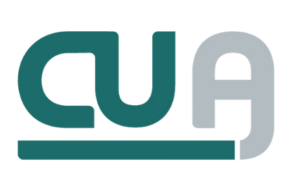IT Financial Management: Master it to create endurance for your small or mid-size business.

Does your small or mid-size business have the endurance and discipline to create long-lasting value for your customers and stakeholders? Are your technology investments solely focused on cost reduction and efficiency? Do any of the following statements resonate with you?
- IT initiatives and the business are often misaligned because what the business values is not well defined or communicated.
- Decisions are made without a shared perspective of value.
- IT is perceived as a deep cost center that does not deliver value.
- The budgeting process is difficult because finance executives have a limited understanding of information technology and use a different vocabulary.
- Common “quick-win” cost-cutting initiatives do not satisfy the organization’s financial objectives.
- Cost-optimization projects often have unanticipated consequences that offset potential cost savings and result in business dissatisfaction.
A constant cycle in large and small companies, no matter the economic environment, has business leaders demanding IT departments to do more with less. Leaders of small-enterprise IT departments feel constantly constrained and pressured to reduce cost. Care must be taken for without informed discipline, cuts to the budget may create bigger shockwaves than the business is ready or willing to handle.
In our previous blog post introducing the IT Fitness Program, we proposed that leaders master the management of technology versus a focus on the technology itself when seeking leverage for strategic advantage. To assist SMB’s we recommended establishing an IT fitness program aligned with your business objectives. Whether your goal is to build muscle, become leaner or agile, you will use a combination of strategies (think – diet, nutrition, exercise) to achieve your objectives.
As with physical fitness, when it comes to IT financial management, you should avoid those trendy cost-cutting programs that may come with some serious side effects that could put your business at risk. Rather, adopt a more balanced and thoughtful approach that builds the endurance needed to thrive in today’s competitive environment. The conversation should start with “What are the goals you are trying to accomplish?” to help you align your financial management strategy for IT and to increase the chance of achieving those goals versus meeting short-term objectives.
You Can’t Shrink to Greatness
“Cost control is a necessary part of effective IT governance. It can help IT position itself well with an organization’s executive management”. Info Tech Research Group Director of Small Enterprise Research, states that in cases where cost containment is an enterprise-wide initiative, every department will likely need to pitch in, and it’s important for IT to play its part. Treat cost-cutting measures as an opportunity to create a more efficient and smarter department and demonstrate that throughout the enterprise.
Having led IT in large global Fortune 500 organizations as well as at smaller companies, one thing I know for sure is that “you can’t shrink yourself to greatness.” Historically, IT departments have been mandated to optimize resources and mitigate risks. Organizational priorities should drive IT priorities, but there is often misalignment. When CEO’s are asked about their priorities, they often cite “maximizing shareholder value” as a top goal. However, heads of IT typically state “improving operational efficiency” as their top priority. To exacerbate this disconnect, IT leaders can misestimate the size of their next IT budget, overestimating or underestimating, which can create issues of credibility in the budgeting process. My experience given this situation almost always leads to IT being asked to reduce their budget resulting in a focus exclusively on efficiency and cost “take outs” versus value creation.
The IT Fitness Program for the SMB
Our IT Fitness Program identifies nine sections that are based on the COBiT Framework and best practices research from Info-Tech Research Group. They are:
- Strategy and Governance
- Financial Management
- People and Resources
- Service Planning and Architecture
- Infrastructure and Operations
- Security and Risk
- Applications
- Data and Business Intelligence
- Portfolio and Project Management
Adopting the IT Management capabilities in this framework will enable your organization to reach the full potential of your IT investments. In this blog, we will cover Financial Management and explore several capabilities including Business Value, Cost and Budget Management, Vendor Management and Cost Optimization.
IT Financial Management

Business Value:
- Everything IT provides must have real business value. IT provides value by maintaining the benefit of existing services and functions it provides, eliminating services that no longer provide benefit, and by creating new value. This is true whether IT operates as a background utility, a broad enabler of business value closer to the user experience, or incorporating the entire chain of value from end to end.
- Therefore, it is critical to ensure a common understanding of what is valuable for the organization to drive growth and consistent strategic decision-making. Then, equip IT to evaluate, direct, and monitor investments to support the achievement of the organization’s values and business benefits. Finally, align IT spend with business value through an enhanced governance structure to achieve cost optimization and ensure IT provides a visible contribution to the creation and maintenance of value.
- With the above in mind, here are three steps to get your organization on the path to benefits realization:
- Understand business value; ensure there is a common understanding of what is valuable for the organization to drive growth and consistent strategic decision making.
- Incorporate benefits realization into governance; align IT spend with business value through an enhanced governance structure to achieve cost optimization
- Ensure an accurate reference of value; IT provides a visible contribution to the creation and maintenance of value.
Cost and Budget Management:
- An IT budgeting process must contain adequate measures to capture and communicate the benefit of IT investments. This begins with the collection of data and ends with effectively presenting the benefits IT investments will have for the business. IT cost pressure is fueled by negative sentiment and IT can be perceived as a high cost that does not deliver value. Budgetary approval is difficult because finance executives have a limited understanding of IT and use a different vocabulary. Detailed budgets must be constructed in a way that clearly highlights benefits but avoids technical detail that is complex and confusing.
- Therefore it is important to build an IT Budget that demonstrates value delivery. However, according to a research survey conducted by Grant Thornton, only 40% of CFOs describe their current financial planning and analysis system as effective. 62% of CFOs claim their staffs were too busy with daily tasks to make the changes needed to keep their budgets up to date. Clearly, the IT budget process and subsequent maintenance extends beyond IT and can be widespread throughout the organization.
- With the above in mind, here are three steps to reduce IT Budgeting frustration in your organization:
- Plan the budget with ample time for collaboration; for example, have preliminary talks with business units to understand their plans for the fiscal year.
- Build the budget; for example start budgeting early, with a sound forecasting methodology.
- Sell the budget and its benefits; for example presell ideas, making business stakeholders into advocates for the budget
Vendor Management
- As IT services and products continue to become outsourced, IT is becoming increasingly dependent on external vendors and a transaction-based approach becomes insufficient to guarantee continued value. Vendor management often focuses on procurement, which can reduce the value of the vendor to that of the transaction itself. When IT does not manage vendors properly, performance levels can drop and fail to deliver essential services – and IT is left accountable.
- IT often has so many vendors that it is impossible to provide the same level of attention to each vendor. Even if there are a few vendors that are clearly the most important, it’s not clear how to monitor relationships with the rest of IT’s vendors. According to a Deloitte Outsourcing Survey, more than 76% of organizations outsource core applications, services, and functions with the primary goal of reducing and controlling operating costs, yet less than 24% of organizations clearly define requirements of outsourced initiatives and have the tools and processes to adequately manage their vendor portfolios
- With the above in mind, here are three steps to get some order to your vendor management process:
- Prioritize and classify your vendors with quantifiable, standardized rankings.
- Focus on your strategic vendors first, then, year over year, work through every classification of vendor.
- Standardize your processes for transitioning in new vendors, maintaining communications, monitoring performance and contingency plans for addressing vendor underperformance.
Cost Optimization:
- IT organizations are being asked to do more with less and just because your budget is being cut, doesn’t mean that the organization’s expectations of IT are any lower. IT cost cuts are everyone’s cost cuts. When IT’s budget is slashed, everyone feels it and fiscally prudent IT leaders need to do their part, working collaboratively with the business to convey the full implications of IT cost cuts, to help mitigate risk and preserve IT’s fundamental capabilities. Operating with a cut budget is no time to just put your head down and soldier on. Broadcast the impact of your reduced spending.
- Whether it is just IT, or the entire organization, when the ax falls, it is critical to be able to absorb the blow. Proactively cutting costs and demonstrating continuous pursuit of efficiencies helps build a strong relationship with the CFO and increases the business’ confidence in IT. Cost optimization gives you an opportunity to realistically trim the fat and the flaws of the IT organization and increase efficiency and performance. Don’t try to cut everything all at once or your actions may have unintended consequences for the business. Understand the magnitude and urgency of your cost-cutting mandate before taking action.
- With the above in mind, here are three steps to get some order to your cost management process:
- Know your mandate; Don’t start identifying potential cuts before truly understanding the external and internal drivers that are dictating the urgency and magnitude of the mandate.
- Build momentum with quick wins; Low-risk, quick-to-implement initiatives that enhance your reputation as a fiscally prudent IT leader – even if initial savings are small.
- Identify initiatives that will save your organization money; Conduct a high-level brainstorming session, harnessing the collective knowledge of the IT leadership team.
We Can Help
Our comprehensive selection of IT Effectiveness Assessments combined with our Assess, Measure, and Improve approach, enables tailored improvement plans to be established and implemented. Given the importance of IT Financial Management as part of the IT Fitness Program, we recommend the following assessments:
- CEO – CIO Alignment is designed to identify and close the gaps between your vision for IT and the business, and ensure alignment of goals and objectives.
- CIO Business Vision is designed to assess the level of satisfaction across core IT services, support and relationships with key stakeholders to identify and better understand areas in need of improvement.
- IT Management and Governance is designed to assess the importance and effectiveness of your core IT processes and to identify and better understand areas in need of improvement.
IT Ally™ has the experience and expertise to help small and medium-size businesses succeed in establishing and improving your IT Fitness Program. To get started, check out our IT Fitness Test to get a customized report or call us at 844-4ITALLY (844-448-2559) to continue this discussion and see how we can improve your IT fitness!
In our next blog, we will cover People and Resources and explore several capabilities including Human Resources Management, IT Organizational Design, Leadership Culture and Values and Knowledge Management.
[This article was originally published on itallyllc.com.]


